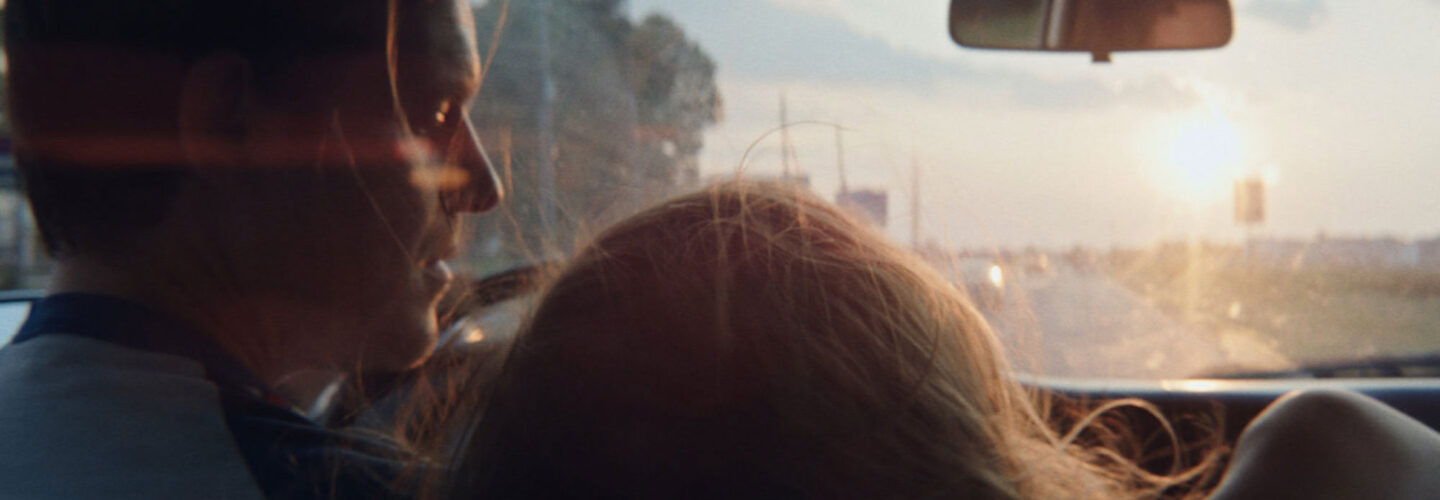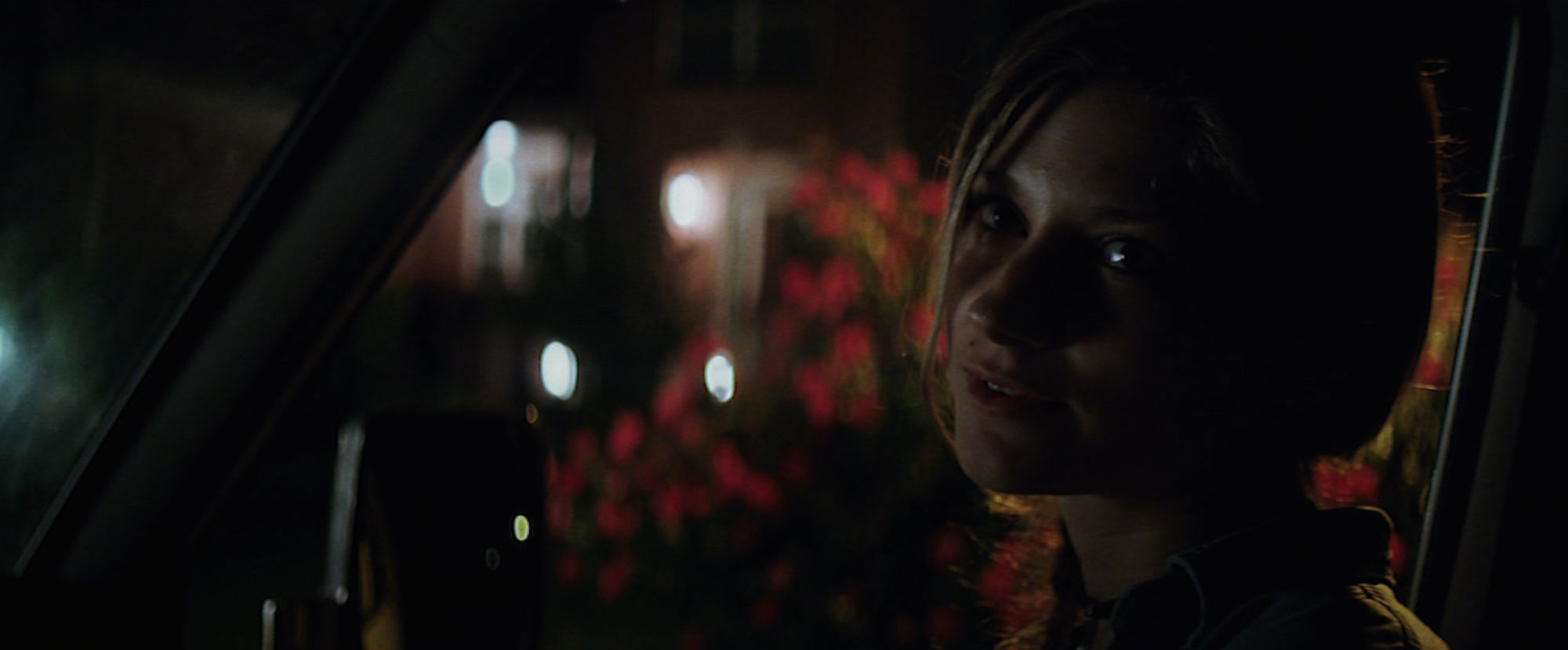
We’re all haunted to some degree by certain people from our past. Previous relationships that fell sour or childhood friends you no longer speak too. That awkward emotional energy is central to Ursula Ellis’ coming-of-age drama For George on His 30th Birthday. When George, a former Myspace musician turned disgruntled pizza place employee reconnects with Deena, a previous lover/admirer from his music days, these tensions are regurgitated and the power dynamics are shifted. Ellis’ short cleverly questions the balance of infatuation alongside factors of age and gender, twisting the atypical road movie formula that we’ve been seeing since Terrence Malick’s Badlands on its head. We’re delighted to premiere For George on His 30th Birthday on our pages today alongside a conversation with Ellis, who talks emotional history, creating a vintage, filmic look and the decade of her life it took to manifest this story.
Where did the story of For George on His 30th Birthday begin for you?
For George originated as a short story I wrote during college in Chicago. I had a fiction professor junior year who turned me onto Joan Didion, and I was having a real Slouching Towards Bethlehem moment stylistically. True to Deena’s experience in the film, I was also spending a lot of time in my hometown of Huntsville, Alabama during breaks from school, even though my parents had moved away by that point.
Like many angst-ridden individuals in their early 20s, I was having a hard time reconciling who I was becoming in relation to who I had been growing up, and there were a few ‘George’ figures I was reconnecting with as I tried to make sense of it all, or maybe I’d just seen High Fidelity too many times and wanted to go on my own Rob Gordon journey to see what would happen. But despite being more of a Deena, the original story, like the film, was always rooted in George’s subjectivity.
The problem of holding someone so close in your mind is that this partially imagined version of them obfuscates who they really are.
How did you flesh out the character of George into your own character?
He’s a composite of a few people I knew in Alabama, but in particular, a friend of mine who is painfully self-aware and perceptive, but consequentially stuck in his own head. I think the problem of holding someone so close in your mind is that this partially imagined version of them obfuscates who they really are. Which is all too familiar to many over-analyzers, myself included, and I wanted to examine the emotional consequences of doing something to an unhealthy degree, further complicated by gender and age.
The age difference is a prominent factor in their story, it really fuels the tension between them.
The uncomfortable age difference between George and Deena was also something important for me to make clear and not excuse. Growing up around my local indie rock scene, many of my closest relationships as a teenage girl were with boys, or young men, who had already graduated high school and were trying to establish themselves as musicians regionally. I didn’t realise until leaving my hometown how strange the dynamics were in that particular milieu since the age difference thing was pretty normalised in the South.
Even in the pre-#MeToo era, I was trying to figure out how to think about this, why these guys were stuck in perpetual arrested development. I spent time thinking about how I felt about how it shaped me, which is frankly still pretty hard to articulate in any kind of succinct way. But this film was a way to start working through those thoughts and feelings in a safe creative space.


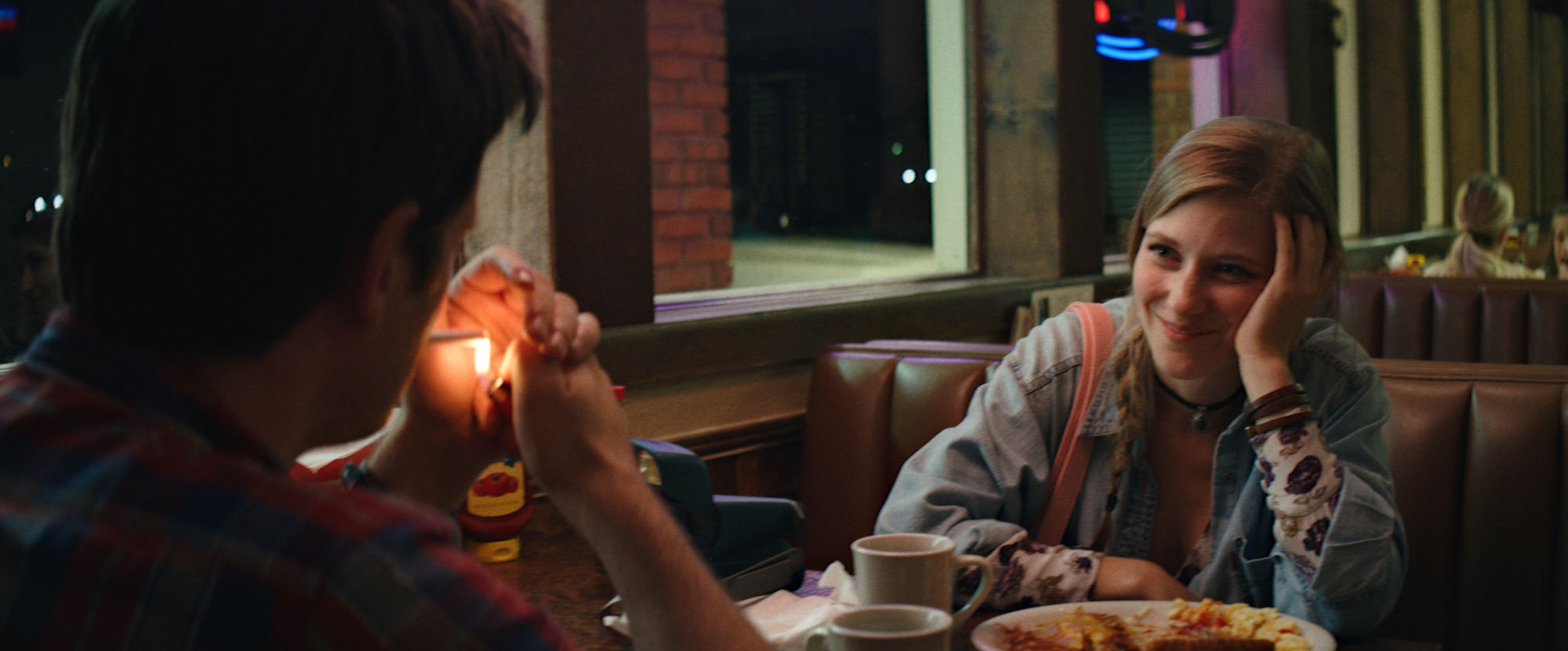
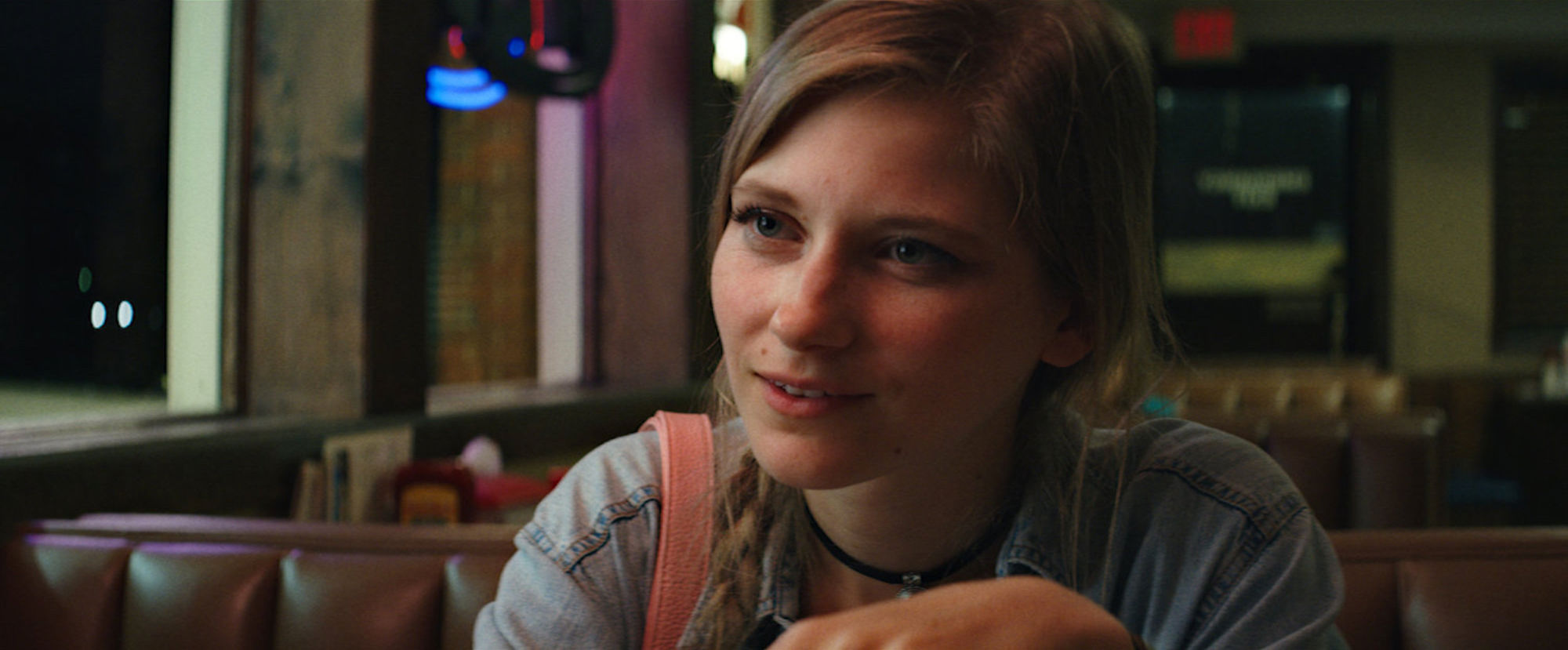
What was the point where you decided to take this from short story to film?
While I was in the MFA film program at Columbia, I decided to explore the story of George and Deena again through a cinematic lens, experimenting with formal notions of memory, time, subjectivity, and place though our camera and editorial language, to see how I could most effectively represent George’s fraught interiority in an immersive way. I wasn’t so interested in an ad nauseam rehashing of their past or seeing it play out in lengthy flashbacks but in their differing reactions to this awkward attempt at reconciliation orchestrated by Deena, punctuated by fleeting glimpses of what their relationship once was, in George’s overactive imagination at least.
This all felt like an ambitious cinematic task, and I was very fortunate to have a team that understood both my personal relationship to the film and creative intention. The film was produced by my partner, Emerson Nosek, and good friend, Ben Gojer, who made it possible to shoot in Huntsville, while living in New York and Chicago, respectively. It meant a lot to me that we actually shot where I grew up, a town best known for being the home of Space Camp, with a large NASA and defense industry presence, but also a constantly growing arts community.
I wanted to examine the emotional consequences of doing something to an unhealthy degree, further complicated by gender and age.
How involved were the local community in the making of For George?
We were able to involve local filmmakers and businesses in the prep and production process, in fact, the ‘Michelle’s house’ location is actually my best friend Erin’s mom’s place. And we were able to shoot in some iconic local spots like the playground at Monte Sano State Park and on our two main thoroughfares, Highway 72 & 565. Driving is such a massive part of living in Alabama, a lot of what I remember from high school was the hazy summer night malaise of casually nodding off in friends’ passenger seats, and I feel like we depicted that aspect of suburban ‘Southern living’ pretty accurately.
What do you feel your actors brought to their roles? en did Michael and Allie come on board with the project?
The film really came together for me when we cast Michael Esper as George and Allie Gallerani as Deena. While an established Broadway actor with many film and TV roles, Michael had his share of ‘boy in a band’ days as well and brought George to life in exciting, unexpected, nuanced ways, with a real depth of feeling and specificity of behaviour. Allie and I have collaborated since college, and I cast her as Deena instinctively without any kind of audition process. Growing up in North Carolina, she related to Deena’s trajectory from a regional perspective as well and brought her own similar experiences to the role, she was able to embody both the sort of modern-day Holly Golightly veneer and more complex interiority and motivations that drive the narrative forward simultaneously.
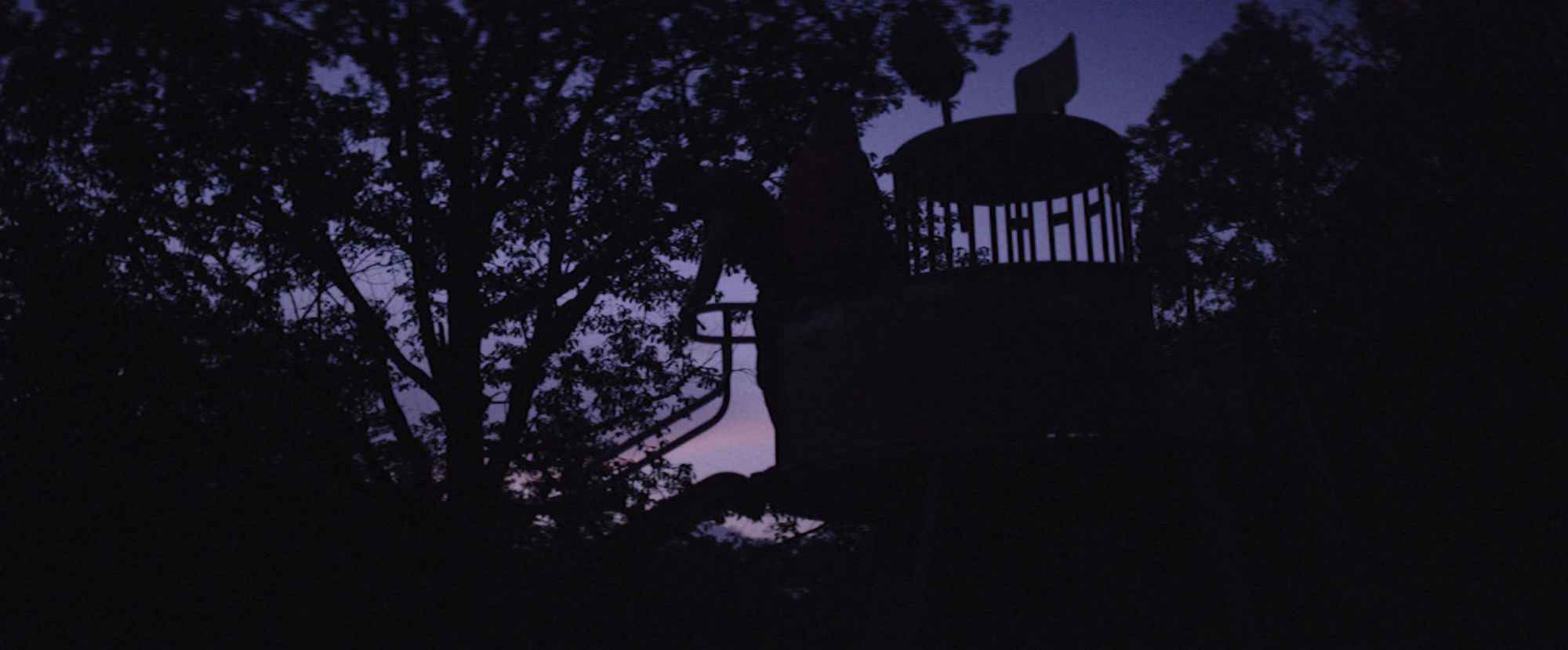
Was it strange to have an old friend working with an established actor? I definitely feel that it feeds into the story you were telling.
It’s definitely sort of weird to cast a good friend, and very accomplished actor, to play a semi-fictional version of you, but I think Allie made Deena into a fully realised character all her own and helped distinguish her from being too close to me as well. Our rehearsal process involved a lot of exploring the world of Deena and George beyond the script, through music, film, improv, etc., and also talking through the greater scope of their relationship not depicted on-camera. Allie and Michael are both very skilled at communicating subtext through behaviour, which I think is maybe what I’m most proud of in the film. Even if you don’t understand the details of their past or the context of a particular anecdote, my hope was that the audience would still know how they’re feeling as characters and be able to relate on a visceral level.
How long was production in total?
We shot the film in just four days, or rather nights, on a pretty breakneck schedule due to a very limited budget. But I have to say it was probably the most fun and bonding set experience I’ve had as director, thanks to the level of professionalism and craft the cast and crew brought to the project, the care everyone on the team had for the story itself, and the intensity and barebones nature of production. The crew consisted of some of my closest friends and fellow filmmakers, and it was a real honour and privilege to have them all drive down to Alabama from Chicago and NYC to work on something so personal to me. We were small and scrappy, but we had a lot of heart!
Did you shoot on anamorphic lenses? I love that widened vintage look. Considering the film is concerned with nostalgia and constructed perceptions, it plays into that a lot.
We shot on a RED Dragon with Kowa anamorphic lenses to lend more of a vintage, filmic look. My DP Nick Perron-Siegel and I were very much influenced by Frederick Elmes’ cinematography in Wild at Heart, and shooting anamorphic helped us compose shots where George and Deena could be in the same frame but operating along different axes and concealing micro-behaviours from one another. I’m especially proud of some of our lighting set-ups as well, particularly for all of our car scenes. Nick and our G&E team, led by Joel Ness and Victor Garces, created some pretty complex rigs that lit those scenes in a subtly heightened but still naturalistic way that I think adds to the emotional subtext.
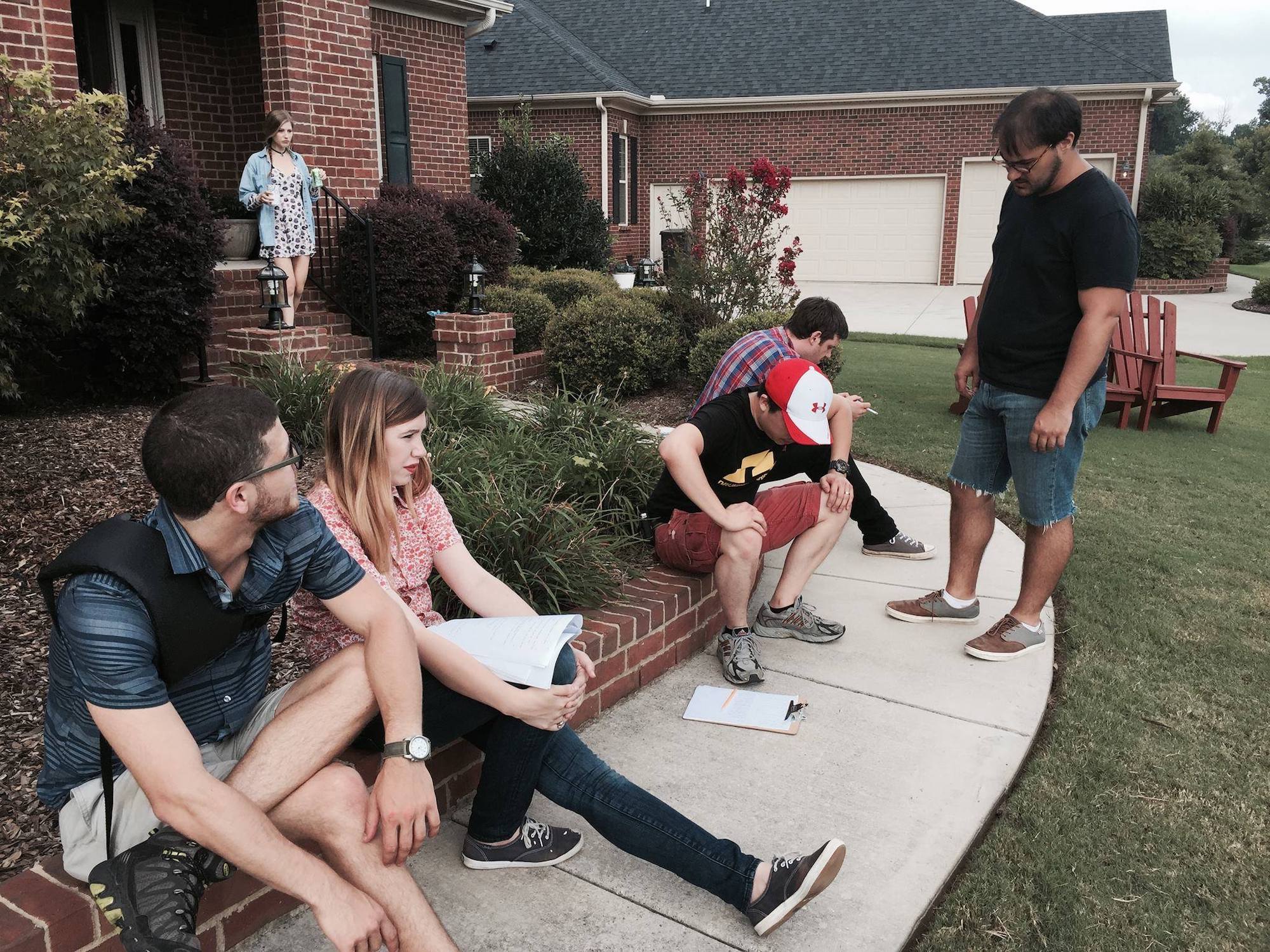
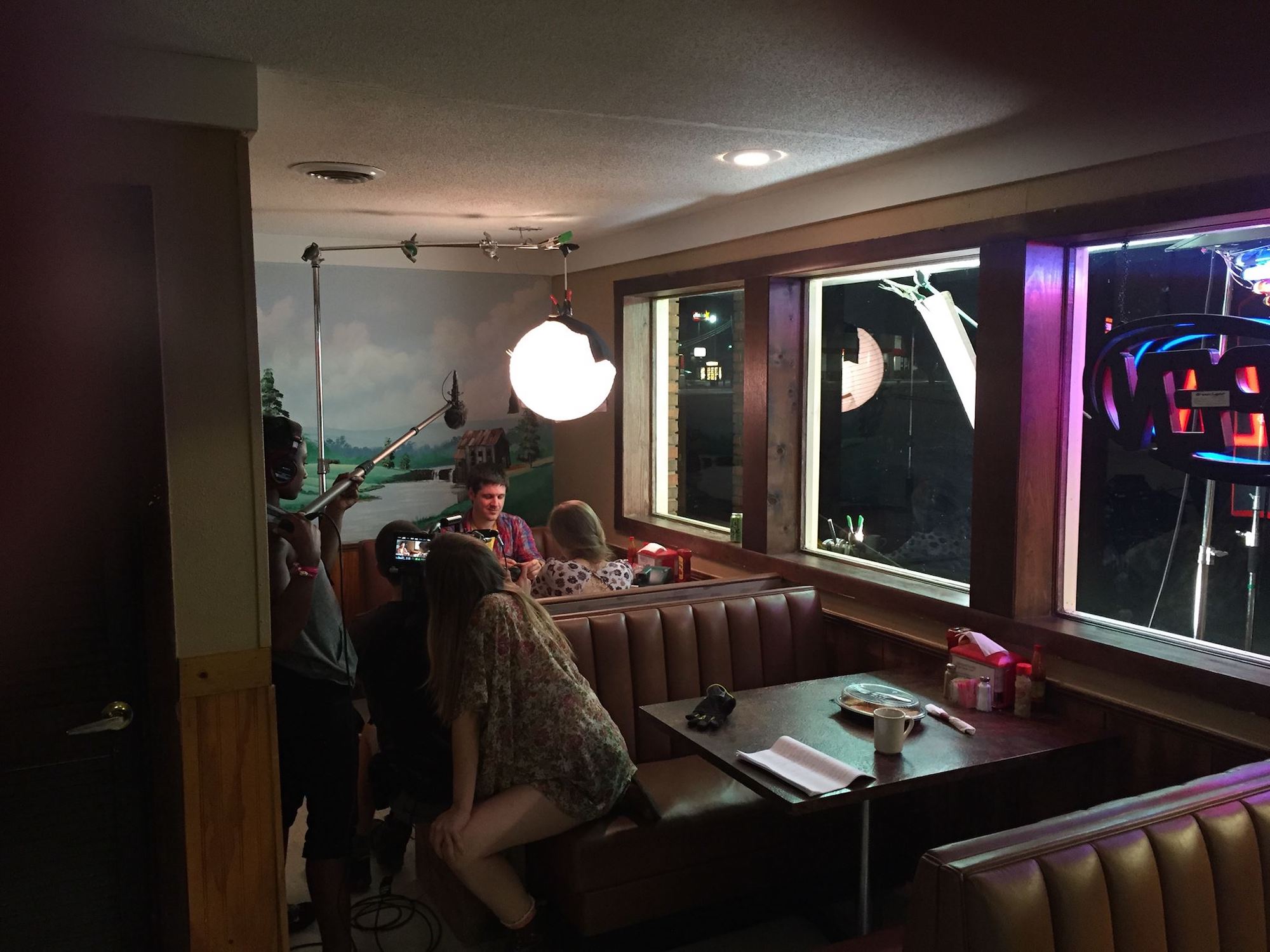

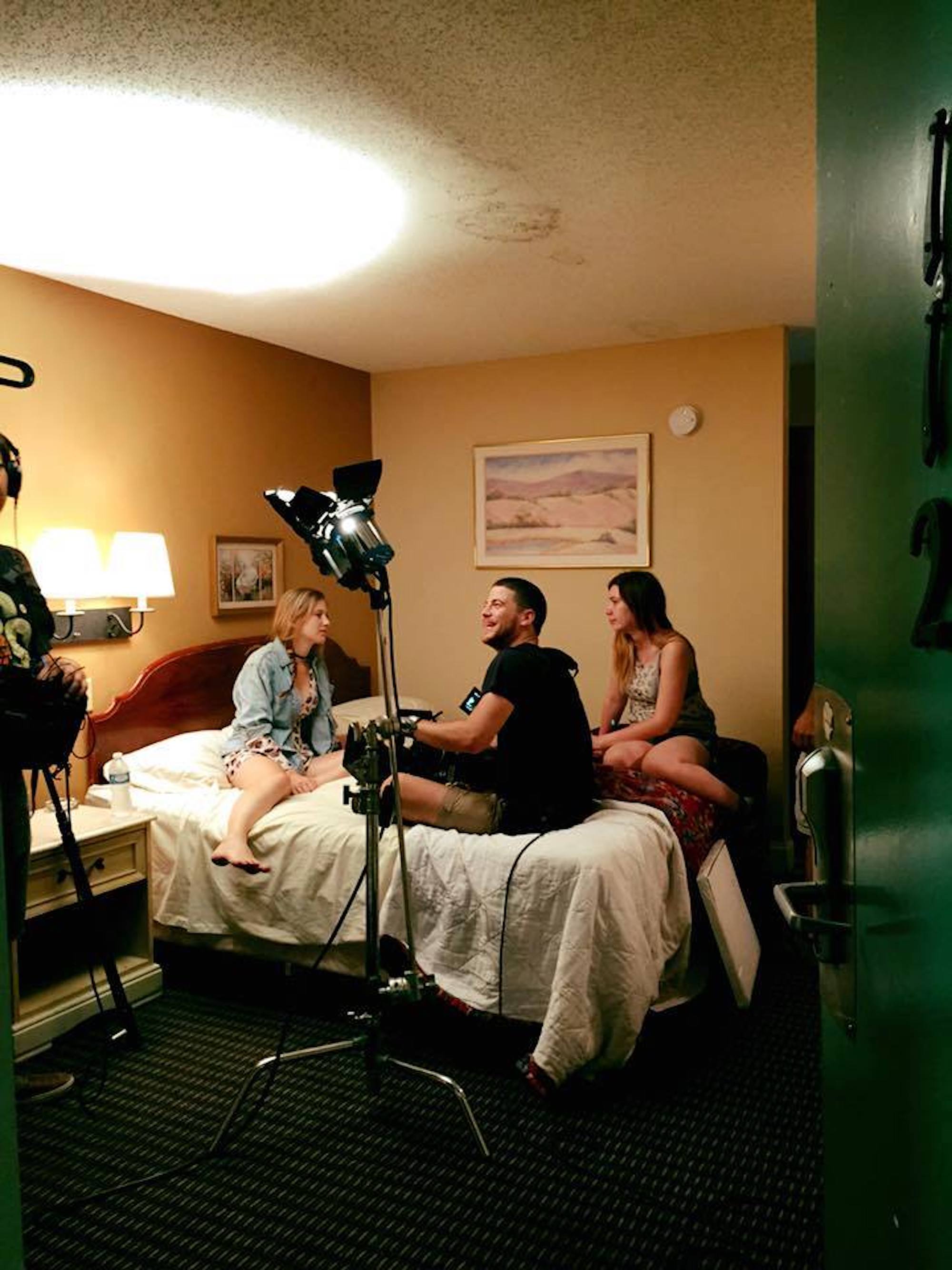

From idea to its release here in 2021, how long has it all taken? Looking back on this entire process is there anything you’ve learned?
I’m a little embarrassed to admit, but making For George took an incredibly long time, the longest amount of time I’ve ever spent on a short film by far, and I’ve made quite a few. While I’m no stranger to making films related to my own experience, For George is my most personal project by far, which I think directly correlates to how long it took me to put it out into the world.
To give a sense of the whole timeline: I wrote the short story in 2011, the script in early 2015, we filmed in September 2015, and then we spent nearly three years in post. We premiered at the Denver Film Festival in November 2018, and I’ve got to say I’ve never felt so much simultaneous anxiety and relief over a screening. Now it’s 2020, and we’re finally releasing it online. I’ve spent essentially a decade of my life working on this story in various forms, including a feature version of the script. The short was always intended as a proof-of-concept for the feature, with the biggest difference being that George and Deena’s past relationship only exists online in the feature version, with no IRL component until the events of the film.
I learned a very valuable lesson about being too precious with your work.
I’m not sure if taking all that time was ‘worth it’ in the sense that I definitely could’ve expedited the post-production process much earlier on (and I don’t recommend taking 3+ years on a short film on principle generally speaking), but I’m happy with the way the film eventually turned out. And I learned a very valuable lesson about being too precious with your work.
What’s on the horizon for you?
I’m currently in post-production on a music video I directed for LA-garage pop/rock artist Veronica Bianqui, for her track I Want to Tell You off her newly released debut record. It was pretty surreal to be back on set in the Covid times, but we managed to get it done safely and I’m really excited to put that out into the world soon. I’ve also been developing a few different feature-length projects, as both writer and writer/director, as well as TV pilot scripts. Otherwise, I’ve been staying at home as much as I can, which has been a good opportunity to brush up on my own musical skills, much to my cat’s dismay, and start dabbling in video game design.

